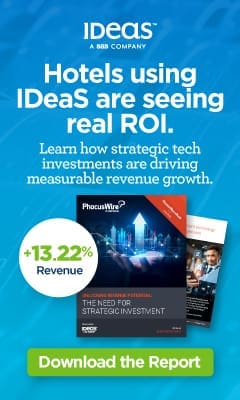 Hotel supply grew a meager 0.5% in 2022 and is forecasted to grow just 1% on average for the next three years, according to a CBRE June report. Meanwhile, demand is expected to exceed supply with some projections showing demand increased as high as 2%.
Hotel supply grew a meager 0.5% in 2022 and is forecasted to grow just 1% on average for the next three years, according to a CBRE June report. Meanwhile, demand is expected to exceed supply with some projections showing demand increased as high as 2%.
Hotel Supply and Demand
Historically, supply and demand have maintained a closer balance. This imbalance bodes well for existing hotel owners but not for hotel developers and the ecosystem that supports them (architects, construction firms, Interior designers, etc.).
The reason for the imbalance is straightforward: the math doesn’t work for most new hotel projects, which has sidelined most developers who need a healthy spread of 150-200 basis points between their development yield and a potential exit yield. The two biggest culprits are the cost of debt capital and the cost of construction.
Why Are Debt Capital And Construction Costs So High?
The first question is easy, and you likely already know the answer. The cost of debt capital is tracking the Fed funds rate, which has moved from near zero to more than 5% in the last 15 months- a record rate of increase. It’s important to note that hotel debt has a large risk premium. If you can get a new construction loan today, your interest rate will likely be in the 8-9% range.
The increased construction cost has been driven by material costs impacted by supply chain issues and labor costs caused by a low supply of construction labor. Material costs are settling, but low labor supply is part of a broader problem in the U.S. labor channel, where we are above what economists call full employment.
When Will These Costs Come Down?
The second question- when will the two costs come down- is much more challenging to answer. We have been in a protracted time of very low-interest rates going back to the Great Recession, which may just be normalizing. To illustrate, the long-term average of the 10-year treasury bill (benchmark instrument) is 4.25% and, as of this writing, the current rate is 4.2%. My point: we are still below the long-term average, and hoping for a significant reduction back to the good old days sure feels like wishful thinking.
If you can get the math to work on your development deal, the next challenge is the availability of debt capital. Roughly 70% of commercial real estate (CRE) has historically been provided by regional and smaller banks, and many have balance sheet issues (another discussion) that will hinder their ability to loan to a new hotel development.
To be sure, there will be new hotel development in a handful of hot markets, mixed-use projects that need a hotel as an amenity, heavily incentivized projects, or even public projects, but hotel supply will likely be 50% below its long- run average annual growth rate for the next three plus years.
The Good News
Some good news: As interest rate reality sets in for buyers and sellers, the transaction market will likely pick up, creating an opportunity for the ecosystem focused on new hotel development. There will be purchased hotels that need renovation, up-branding, and repositioning.
Additionally, current owners who hold and benefit from generally improved operating performance will turn their attention to renovation work.
In the future, new hotel supply will revert to its long-run average, but until the deal math works, it will mostly be “pencils down,” as I hear more and more hotel developers saying these days.














